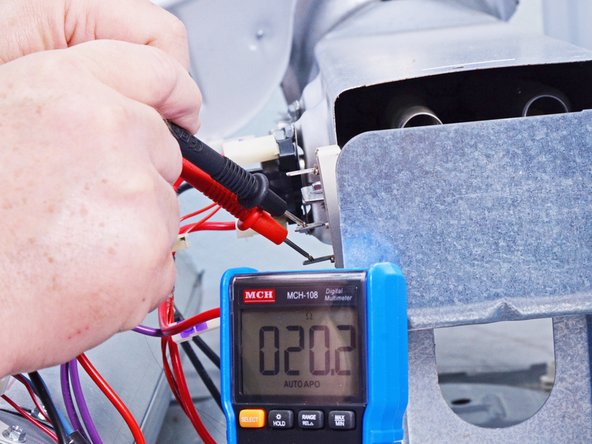crwdns2935425:03crwdne2935425:0
crwdns2931653:03crwdne2931653:0




Test the heating element
-
If the heating element has only two terminals, you will just check the resistance between those terminals.
-
If there are three terminals (common on newer machines, and shown here), check the resistance between the middle common terminal and each of the element terminals.
crwdns2944171:0crwdnd2944171:0crwdnd2944171:0crwdnd2944171:0crwdne2944171:0